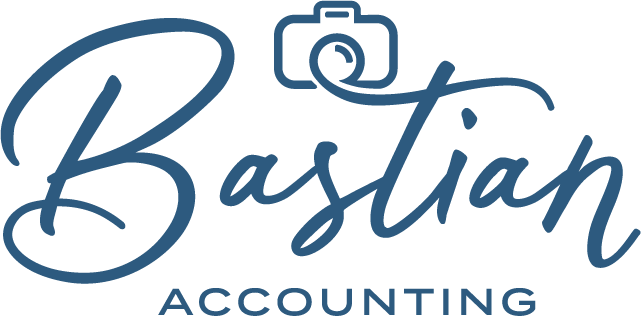The Deposit Deception: What Photographers Need to Know About Their Real Income
Why Bank Deposits Don't Tell the Whole Story
As photographers, you're passionate about capturing beautiful moments, mastering lighting, and finding the perfect backdrop. That's why you got into this business in the first place! However, the financial side of running a photography business can quickly become overwhelming, especially when it comes to understanding your true revenue.
After working with numerous photographers this tax season, I noticed a concerning pattern that could be costing you money and causing unnecessary stress: many photographers are mistakenly recording their bank deposits as revenue.
The Bank Deposit Misconception
When a client pays you through your CRM system or gallery platform, the amount that lands in your bank account rarely represents your actual income. Yet many photographers simply download their bank statements and categorize all deposits as revenue. This approach creates several problems:
You pay income tax on money that isn't yours (like sales tax)
Your financial reports don't accurately reflect your business performance
You miss out on claiming legitimate business expenses (like payment processing fees)
Your tax liability is incorrectly calculated
Let's break down why this happens and how to fix it.
Understanding the Components of Your Deposits
Sales Tax Complications
In 45 states, photographers must charge sales tax on at least some of their services or products. This money isn't yours to keep - you're simply collecting it on behalf of your state government. When it lands in your bank account, it should be recorded as a liability (something you owe), not as income.
Payment Processing Fees
Your CRM or payment processor typically charges 2.5-3.5% for each transaction. These fees are deducted before the money hits your account, meaning your deposit is already less than what your client actually paid. These fees are legitimate business expenses that should be tracked separately.
Timing Issues
Deposits for future sessions, retainers for weddings booked six months out, or payments for services not yet rendered aren't technically income until you've earned them. Proper accounting recognizes this timing difference.
A Real-World Example
Let's walk through a typical wedding photography transaction:
Wedding package price: $4,000
Sales tax (6%): $240
Client's total payment: $4,240
Payment processing fee (3%): $127.20
Amount deposited to your bank: $4,112.80
If you record the entire $4,112.80 as income, you're:
Overstating your revenue by $240
Missing a $127.20 business expense
Creating tax complications
The Proper Bookkeeping Approach
Here's how this transaction should be recorded:
Income/Revenue: $4,000
Sales Tax Liability: $240
Payment Processing Expense: $127.20
Bank Deposit: $4,112.80
This approach ensures your books accurately reflect your business reality.
Solutions for Better Financial Management
1. Use Proper Accounting Software
CRMs are excellent for client management but typically lack robust accounting features. Invest in dedicated accounting software like QuickBooks, Wave, or FreshBooks that allows for proper categorization of transactions.
2. Understand Your Systems
Take time to understand how money flows from your clients through your various platforms and into your bank account. Each system might report transactions differently.
3. Reconcile Regularly
Don't wait until tax time to organize your finances. Set aside time monthly to reconcile your accounts and ensure everything is properly categorized.
4. Work With a Specialist
Consider partnering with an accounting professional who understands the unique challenges photographers face. At Bastian Accounting, we specialize exclusively in working with photographers and understand the nuances of your business model. (see button at the bottom to learn more about our services)
The Balance Sheet: Your Secret Weapon
While most business owners focus solely on their Profit & Loss statement, your Balance Sheet is equally important, especially for tracking sales tax liabilities and prepaid client retainers. A proper Balance Sheet gives you a complete picture of your business's financial health.
Moving Forward
Understanding the difference between bank deposits and actual revenue is just one piece of the financial puzzle. But getting this right can significantly impact your tax liability, financial clarity, and business decision-making.
Ready to bring your photography business finances into focus?
We're here to help.
Whether you need full-service monthly bookkeeping or just guidance on setting up your systems correctly, Bastian Accounting specializes in helping photographers capture financial clarity.
Tiffany Bastian is an Enrolled Agent and founder of Bastian Accounting, providing specialized accounting services exclusively for photographers nationwide. With over two decades of experience and an MBA in accounting, she's passionate about helping photographers understand their finances and focus on their craft.


